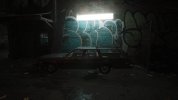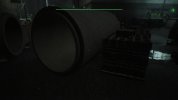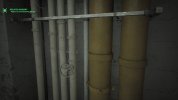While the outdoor areas in Avatar look very good, the lighting of the isolated indoor areas can't even begin to keep up with the pathtracing games. Unlike Cyberpunk 2077, not all light sources cast shadows. If you're used to pathtracing the indoor lighting looks inconsistent. Partly unsightly for me.
Outdoor areas can still be made vivid without pathtracing but RT GI is highly recommended. Even in a non RT GI game like Battlefield 2042 the outdoor areas can look okay. Inside, however, you only see lighting mistakes.
Yah that’s the primary reason I don’t think CP2077 is as visually good as Alan wake 2 or Avatar (in some areas). Cyberpunk just looks kind of simple. It’s very clean with straight lines and not much clutter. The roads are very smooth and weirdly shiny. It looks like ps4 geometry and world detail with amazing lighting. Some npcs and areas look highly detailed and I think the expansion content looks better.
Control has many smooth surfaces and yet it looks fabulous. When I play Control I see a very elaborate render quality that already needs more computing power than the newly released PlayStation 5 can provide. It doesn't remind me of the last console generation at all.
Cyberpunk 2077 has quite a bit of geometry for a game in a city. It also has a lot of different individual objects standing around. Some of them are very detailed (vehicles) and other could be made better (food products) but that doesn't detract much from the overall impression. Cyberpunk 2077 lacks tessellation and therefore the ground is too smooth whereas it is 3D in Avatar.
Overal, Night City is not a last gen world detail for me. The focus was clearly on the PC and when I look at typical open world games from the last console generation they are much less detailed and simpler to create. Spiderman 2 is an exclucive PlayStation 5 game and at close range it looks simplictic to me. The Division has more details but in Spiderman 2 you're not just on the ground either.
In Cyberpunk 2077, many people only have driving and walking around in their heads. The game also has a lot of highly expensive set pieces for the missions. Thanks to pathtracing they look even more impressive now. But I hope that CD Projekt Red will fix the bugs in the glass, integrate smoke into pathtracing, and fix shadowing so that the shadows on water become blurred. Then it would be perfect.








